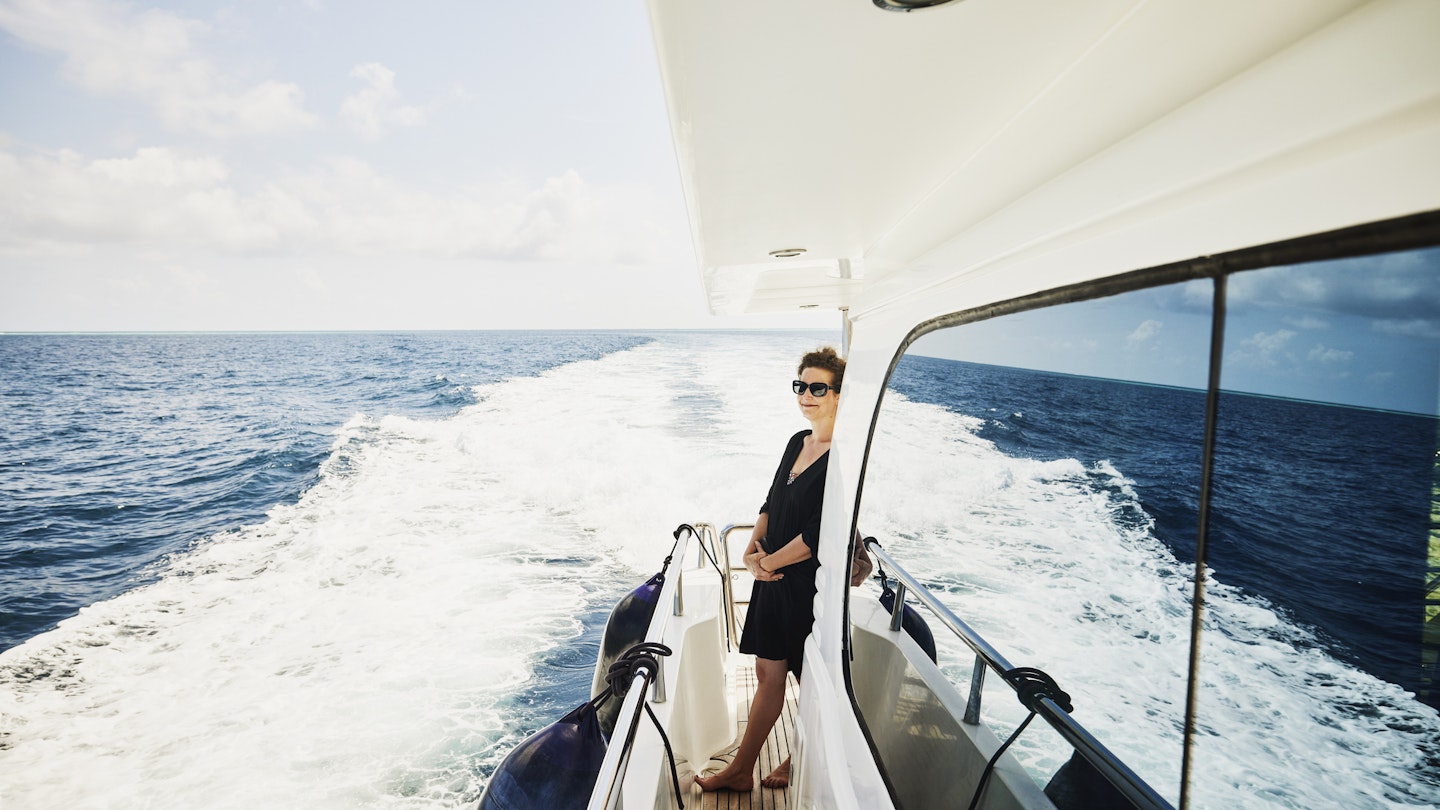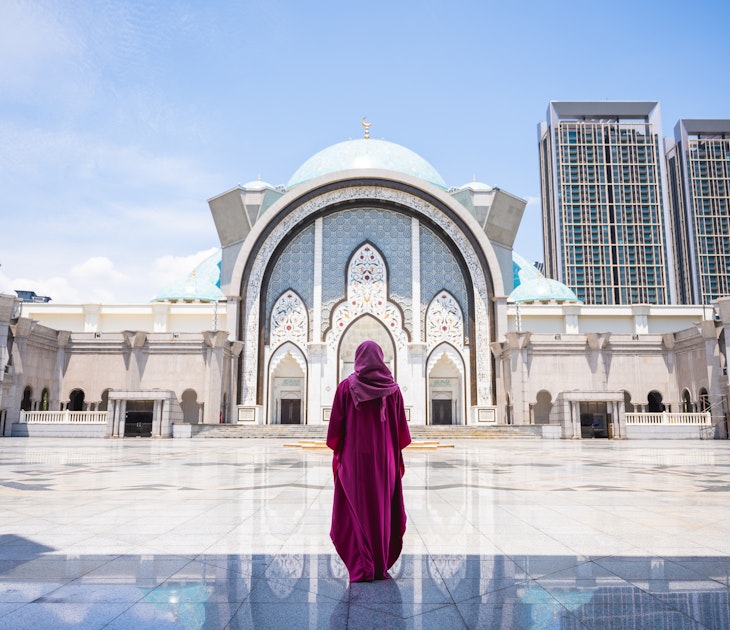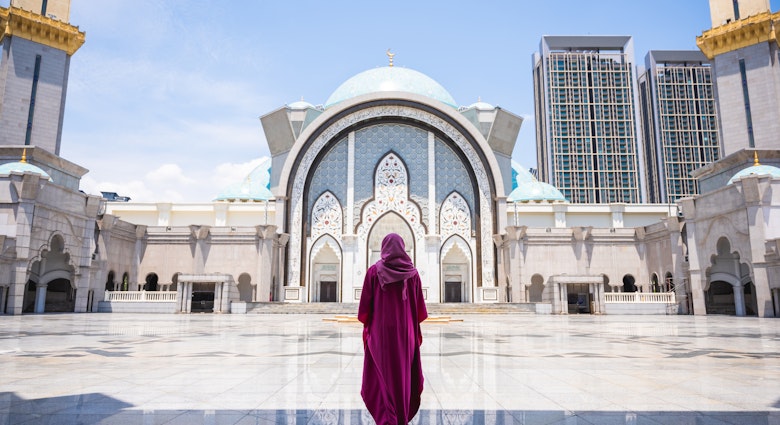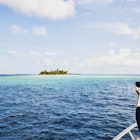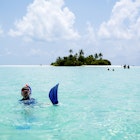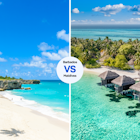Velana International Airport in Male is the gateway for most visitors to the island-nation of the Maldives. As you disembark, take in a delicious blast of salty sea air and glimpse the tantalizing turquoise waters.
The small arrivals hall is almost always packed with representatives from the various resorts, who’ll be holding signs bearing guests’ names, ready to whisk you away via internal flight, seaplane or speedboat.
The Maldives has 26 atolls and over 1000 islands, so visitors need to consider not only which island they’re heading to, but how they’ll get there and get around. Here’s our guide to help you figure out all things transportation.

Hop on a seaplane
For many visitors to the Maldives, a flight in a seaplane is one of the most spectacular modes of transport when it comes to getting around the islands (although some resorts will require you to hop on a scheduled flight).
The seaplane terminal at Velana International Airport is in a separate building to the international arrivals and departures halls. You’ll be transferred to and from this area by shuttle bus. It’s seriously swanky – it was constructed in 2022 and the four-storey building has private lounges for the majority of resorts requiring seaplane transfers.
Typically, seaplanes have room for around 10 people. Luggage is placed at the rear and passengers will be able to see straight into the cockpit, where the captain will almost certainly be piloting the plane barefoot. Seaplanes are cramped, hot and noisy (you’ll be provided with earplugs), but since they fly at a lower altitude than scheduled routes – the stunning views make these minor discomforts worthwhile.
Bear in mind that seaplanes can’t fly at night. If your resort is near an island with a domestic airport you’ll be transferred onto a scheduled flight to the nearest domestic airport free of charge (you’ll then hop on a speedboat for the remainder of your journey). Depending on the location of your resort, expect to pay between $290 and $700 for a roundtrip seaplane flight. The operator you’re most likely to fly with is Trans Maldivian Airways, which owns the world’s largest seaplane fleet.
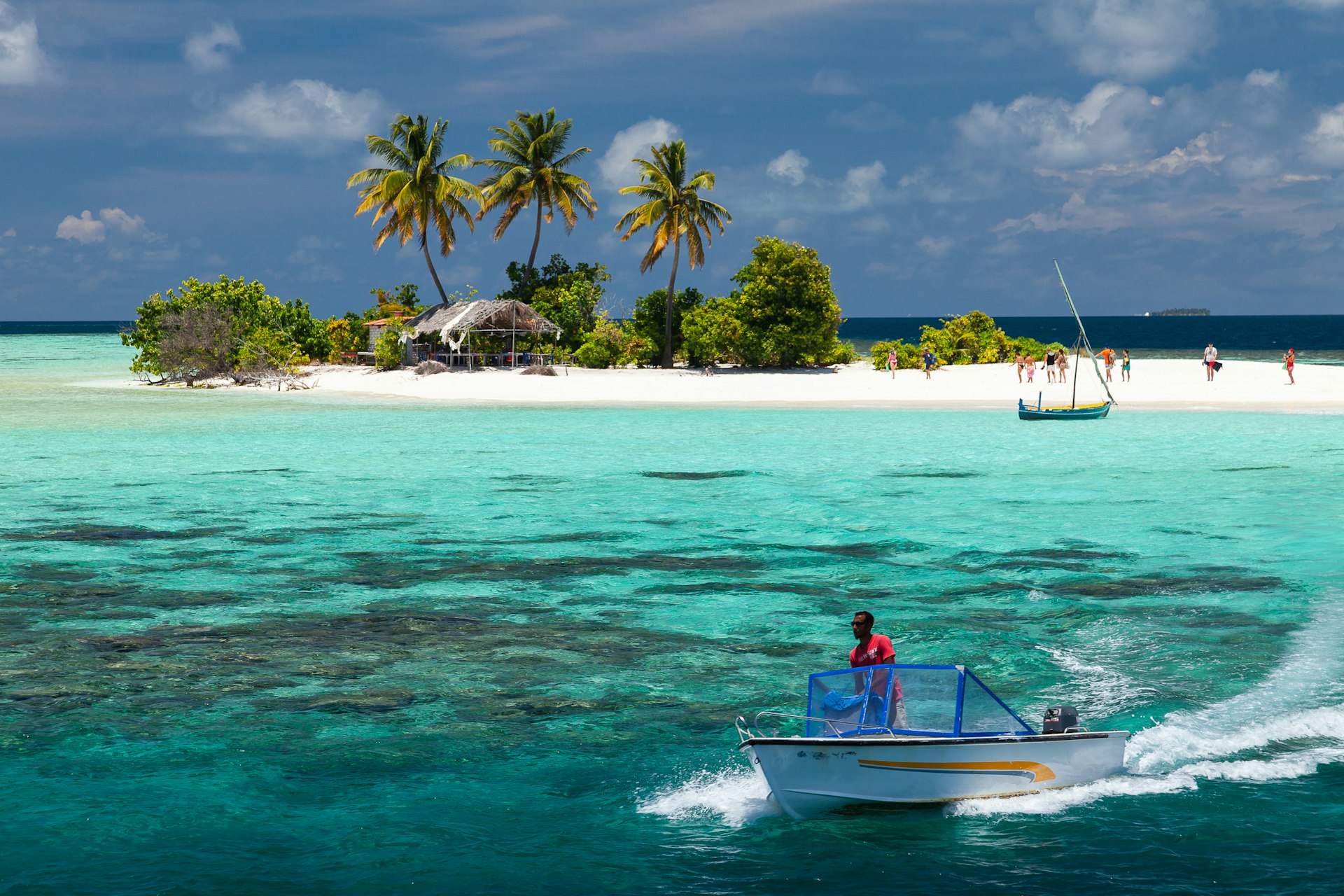
Take a speedboat
If your resort refers to a speedboat transfer (which will always be included in the nightly resort rate) erase any images of tiny boats bouncing across the waves as you struggle to stay upright. The majority of these vessels bear more resemblance to yachts, with large, covered areas, kitted out with sofas, a television and food and drink stations. You’ll likely be presented with a welcome drink and cold towel upon boarding. And bonus: many resorts use the journey as an opportunity to get the check-in paperwork out the way!
Transfer times vary depending on your resort’s location, but can be between 20 minutes and one hour. Make sure you soak up the view from the deck – it’s highly likely you’ll spot various marine creatures, including the dolphins often seen frolicking in the waves close to Velana International Airport.
Book a scheduled inter-island flight
As an island nation, the Maldives has several (13, at the last count) domestic airports. The airlines which fly to these islands – many of which are in remote areas – are lifelines for locals and allow tourists to reach resorts inaccessible by speedboat. Although seaplanes are an option to reach remote resorts, scheduled flights are often cheaper – especially when it comes to getting around the Maldives with a family.
Popular regional airlines in the Maldives include Maldivian Airlines and Manta Air. Scheduled flights are cheaper than seaplane flights, with an average cost of between $150 to $550, depending on your destination, and flight times for both scheduled and seaplane flights range from 20 minutes to 90 minutes. Transportation costs in the Maldives are generally higher on account of a small number of airlines operating in the country and the smaller size of planes (scheduled flights will typically be on planes which carry a maximum of around 70 people).

Hop on a bike or a golf buggy
Although most Maldives resorts are on islands you can easily walk around in under an hour, some resorts will have a fleet of bicycles for guests to ride, and the golf buggies used by staff to take luggage to villas can also be summoned by guests. Typically, buggy pick-ups can be arranged by telephoning reception, although guests can also hail passing buggies they spot driving around the island.
Explore further afield via yachts, boats and liveaboards
Once you’re on your chosen resort island, don't think you’re stuck there! A growing number of resorts offer excursions to nearby islands, including trips to local community islands designed to provide a deeper insight into the region. Some resorts even have yachts for guests to charter for multi-night excursions to other atolls.
If you’ve got cash to splash, consider a private charter. The Soneva in Aqua, for example, is a yacht mostly used for short excursions booked by guests staying at the Soneva Fushi and Soneva Jani resorts, two sister resorts which are just a few miles apart. However, like other resort-owned yachts, it can also be privately chartered for multi-night jaunts around the Maldives, not just to local islands but to atolls hundreds of miles away.
Additionally, several small cruise lines also offer trips around the Maldives, allowing passengers to spend a few hours each day on some of the region’s more luxurious resorts (most of which offer day passes). Some cruise lines to check out include Intrepid, Ponant and Explora Journeys.
A great way to explore the islands is via liveaboard – a boat with onboard accommodation. Divers often opt to spend a week or two on these, exploring remote atolls where there are few resorts.
Accessible travel is lacking in the Maldives
The Maldives has a long way to go when it comes to accessibility. Guide dogs are banned (as is private ownership of dogs throughout the country) and there are only a few air bridges at the airport, which means disembarking via the stairs is the most common option. However, special assistance is available at Male airport (contact your airline in advance).
Public ferries are harder for those in wheelchairs with no staff on hand to help or ramps for wheelchair users. Always let your resort know about your accessibility needs in advance, but be aware the Maldives – a place consisting of thousands of sandy islands, most of which have no roads or paved footpaths – can be a tricky destination for travelers in wheelchairs.
